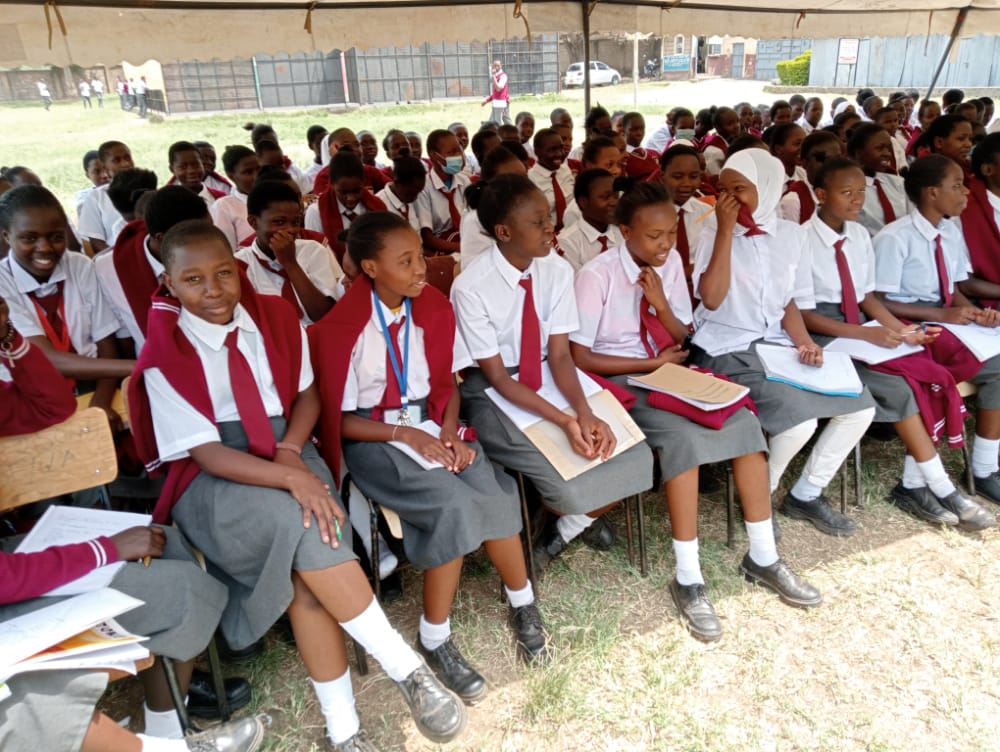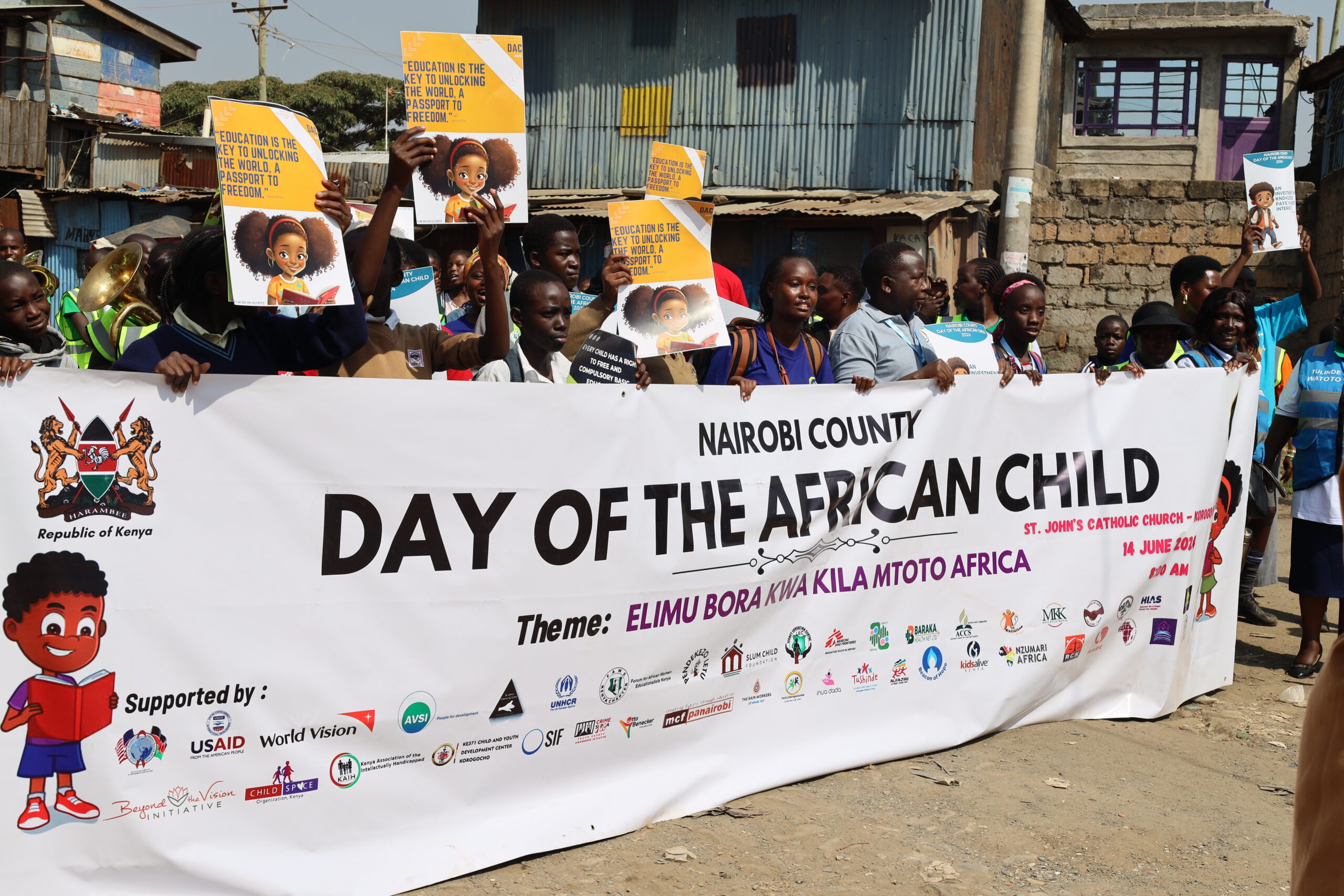By Stella Chege, FAWE Programme Officer
The international literacy day is celebrated each year on the 9th of September to remind the public of the importance of literacy as a matter of dignity and human rights, and to advance the literacy agenda towards a more literate and sustainable society. This year, the theme is “transforming literacy spaces” with a focus on rethinking the fundamental importance of literacy learning spaces to build resiliency and ensure quality, equitable and inclusive education for all. As we commemorate the world literacy day, we need to reflect on why 55 years on, 11% of the world’s population is illiterate and what should happen to ensure 100% literacy globally.
UNESCO’s definition of literacy describes a “means of identification, understanding, interpretation, creation, and communication in an increasingly digital, text-mediated, information-rich and fast-changing world[1]”. This goes beyond the conventional definition of literacy as the acquisition of reading, writing, and counting skills but as a fundamental foundational skill underpinning acquisition of knowledge. Illiteracy therefore is the inability to read and write (with understanding) a short simple phrase in one’s everyday life. It also encompasses the inability to conduct simple numerical calculations in everyday life.
In 2019, the World Bank launched the learning poverty indicator to track the global learning crisis. The learning poverty rate measures the proportion of children who are unable to read a simple text with comprehension by age 10[2]. It serves as an early warning on how education systems are faring on the acquisition of foundational skills with high levels of learning poverty pointing to failing education systems.
Despite all the progress made in ensuring universal access to quality education, 771 million people globally -of which 2/3 are women- are considered illiterate[3]. According to UNESCO, Africa hosts 17 out of 20 countries with the lowest literacy levels[4]. Additionally, children in Sub-Saharan Africa suffer from the worst learning poverty. In 2019, the learning poverty rate in Africa was 86 percent[5]. This is expected to rise, due to the effects of the COVID 19 pandemic on learning. The pandemic exacerbated an already existing crisis, rolling back gains that had been won over the past decades. In Africa over 250 million children were out of school for the greater part of 2020 and 2021. Due to Covid driven school closures, children only learned on average 5-20% of what they usually learn. According to Human Rights watch[6], 40% of countries in sub–Saharan African countries did not provide any remote learning strategies because they were grossly unprepared for an emergency of that magnitude. The pandemic saw an Increase in incidences of school dropout and child marriages. It is estimated that globally, 10 million children will not return to school after the pandemic.
What contributes to the poor state of literacy
Schools have inadequate literacy programs. Without a strong literacy foundation all efforts to bolster educational attainment in the higher levels of education become more difficult to sustain.
Underfunding: Though providing universal access does not automatically lead to poor quality, adequate allocation of resources is necessary to ensure that quality is maintained. In many countries in Africa, universal access has translated into overcrowded underfunded schools due to inadequate resourcing.
Inadequate teacher training and investment in teacher education, particularly at the foundational levels leads to poor acquisition of basic skills for learners.
Lack of or inadequate access to reading resources and materials in and out of school.
Intergenerational education inequalities lead to poor outcomes for children who’s care givers have low levels of literacy. Research shows that boosting mother’s or caregivers’ literacy may be one of the best ways to improve children’s academic achievement[7].
Children in difficult circumstances including conflict, extreme poverty or children engaged in child labor are the most disproportionately affected by learning poverty and the least likely to acquire functional literacy skills unless timely interventions are made.
Recommendations
- African Governments need to go back to basics and prioritize foundational learning. Resource allocation should include universal enrolment, teacher training and adequate resources in schools.
- Increase community-based interventions that promote literacy.
- Literacy interventions should reach the most disadvantaged populations.
- Language of instruction: Research has shown that children taught in their mother tongue their first language, have better literacy outcomes than those learning to read in unfamiliar languages.
- Establishment of well-structured literacy programs in schools, that consider the following elements[8]: Adequately trained and prepared teachers who are knowledgeable and use effective instructional techniques; Adequate instruction time for lessons focused on literacy development; Appropriate, adequate and varied teaching and learning materials; An effective assessment system that monitors individual progress; and opportunities for families to participate in the learners instruction through access to practice materials.
References
- Human Rights Watch, Impact of Covid-19 on Children’s Education in Africa, Submission to The African Committee of Experts on the Rights and Welfare of the Child 35th Ordinary Session, 31 August – 4 September 2020
- Green CM, Berkule SB, Dreyer BP, Fierman AH, Huberman HS, Klass PE, Tomopoulos S, Yin HS, Morrow LM, Mendelsohn AL. Maternal literacy and associations between education and the cognitive home environment in low-income families. Arch Pediatr Adolesc Med. 2009 Sep;163(9):832-7. doi: 10.1001/archpediatrics.2009.136. PMID: 19736337; PMCID: PMC3083977.
- The world Bank et al, 2022, The State of Global Learning Poverty: 2022 Update- CONFERENCE EDITION June 23, 2022 https://thedocs.worldbank.org/en/doc/e52f55322528903b27f1b7e61238e416-0200022022/original/Learning-poverty-report-2022-06-21-final-V7-0-conferenceEdition.pdf
- UNESCO, September 2017, Literacy Rates Continue to Rise from One Generation to the Next, Fact Sheet No. 45 September 2017 FS/2017/LIT/45 http://uis.unesco.org/sites/default/files/documents/fs45-literacy-rates-continue-rise-generation-to-next-en-2017.pdf
[1] What you need to know about literacy | UNESCO
[2] https://thedocs.worldbank.org/en/doc/e52f55322528903b27f1b7e61238e416-0200022022/original/Learning-poverty-report-2022-06-21-final-V7-0-conferenceEdition.pdf
[3] What you need to know about literacy | UNESCO
[4] UNESCO, September 2020
[5] World Bank Et al, June 2022
[6] Human Rights Watch, Sept 2020
[7] https://www.nih.gov/news-events/news-releases/improving-mothers-literacy-skills-may-be-best-way-boost-childrens-achievement
[8] https://www.cde.state.co.us/node/43730






Leave A Comment